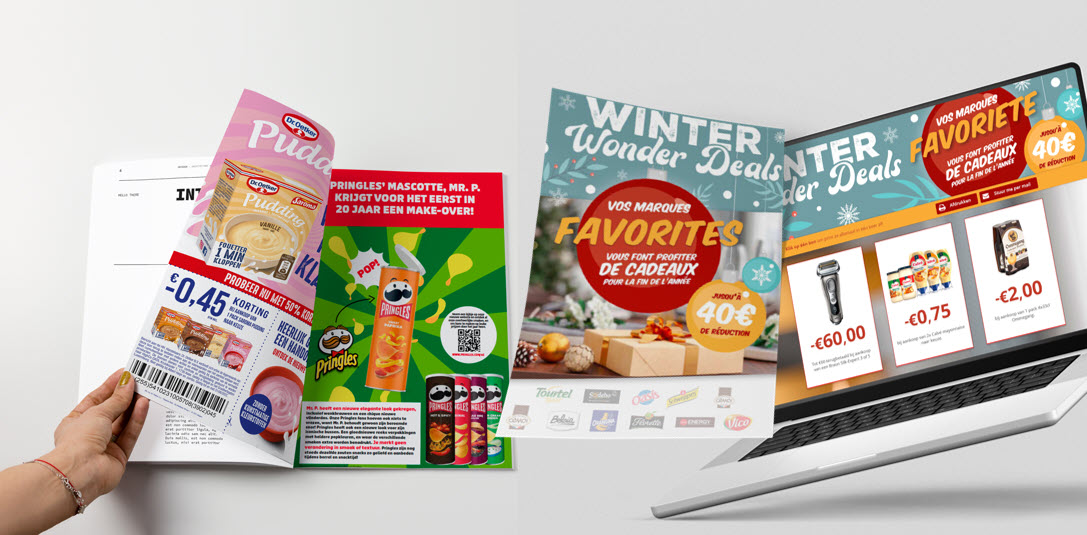A study by our northern neighbors shows the number of Dutch people who look at both paper and digital sales catalogues has grown to 59%, more than double the 25% recorded in the same study in 2018. To put that in perspective, only 22% of those who look at sales catalogues exclusively look at the paper versions, down from 57% in 2018.
All told, 34% of catalogue browsers consciously and exclusively choose digital sales catalogues, prompted by environmental considerations and a desire to reduce their paper-based waste.
Retailers need data and advice to base their decisions on.
At GfK, a study was set up to collect information about the position of the classic sales catalogue on the Dutch market.
This study aimed to examine how Dutch consumers experience the difference between paper and digital sales catalogues from various sources, and whether there are possibilities for reducing the dependence on paper catalogues.
Below is a short summary of the results.
Sales catalogues encourage purchases
The Dutch love discounts. In fact, 90% of people reading sales catalogues take action in response to what they see. Up to 41% of readers decide which articles they will buy on the basis of what they see in the catalogue. The majority of Dutch people look through the sales catalogues from supermarkets and stores every week, just to stay up to date with what’s on offer.
Digital, paper or both?
Paper and digital sales catalogues work hand in hand to give information about discounts and possible savings. With paper sales catalogues, readers can calmy take a look at what’s on offer. Readers of digital sales catalogues are particularly interested in promotions, prices and product comparisons, and saving money.
Noticeably, it is particularly women who look at digital sales catalogues. Young men also spend more time looking at the digital editions.
The paper version is consumed predominantly by people who are over the age of fifty. Furthermore, we have established that there are slightly more men than women who read paper sales catalogues.
Classic, printed sales catalogues are therefore an effective means of motivating people to make purchases. This is why physical and digital sales catalogues have different target groups. They need to be used together for maximum effect.

Environment
By far, the most important reason why people exclusively read digital sales catalogues is to be more sustainable.
People who exclusively read digital sales catalogues (19%) admit that they do this to reduce environmental damage (80%) and to limit their paper waste (80%).
For them, it is aggravating to see sales catalogues packed in plastic. And a lot of people are uncomfortable about the fact that full bundles of untouched sales catalogues are being thrown away, particularly when there is a good alternative.
A nice, practical example of eCouponing
Weight Watchers, known for its dieting programme, launched a product range that offers alternatives to high-calorie foods. They used their most popular products (e.g. charcuterie) to help familiarise clients with their lesser-known products.
Weight Watchers wanted to boost its cross-category sales and launched a CRM platform for eCoupons with a performance-based online media campaign. HighCo DATA guaranteed they would attract new members and drive cross-category sales with this total solution.
HighCo DATA conducting discussion with the industry.
HighCo DATA whose mission is to support the market in promotional solutions has been in discussions with the industry for some time to roll out the e-coupon and mobile coupon in Belgium.
If you have more questions about this do not hesitate to contact us.

No Comments Yet
Let us know what you think